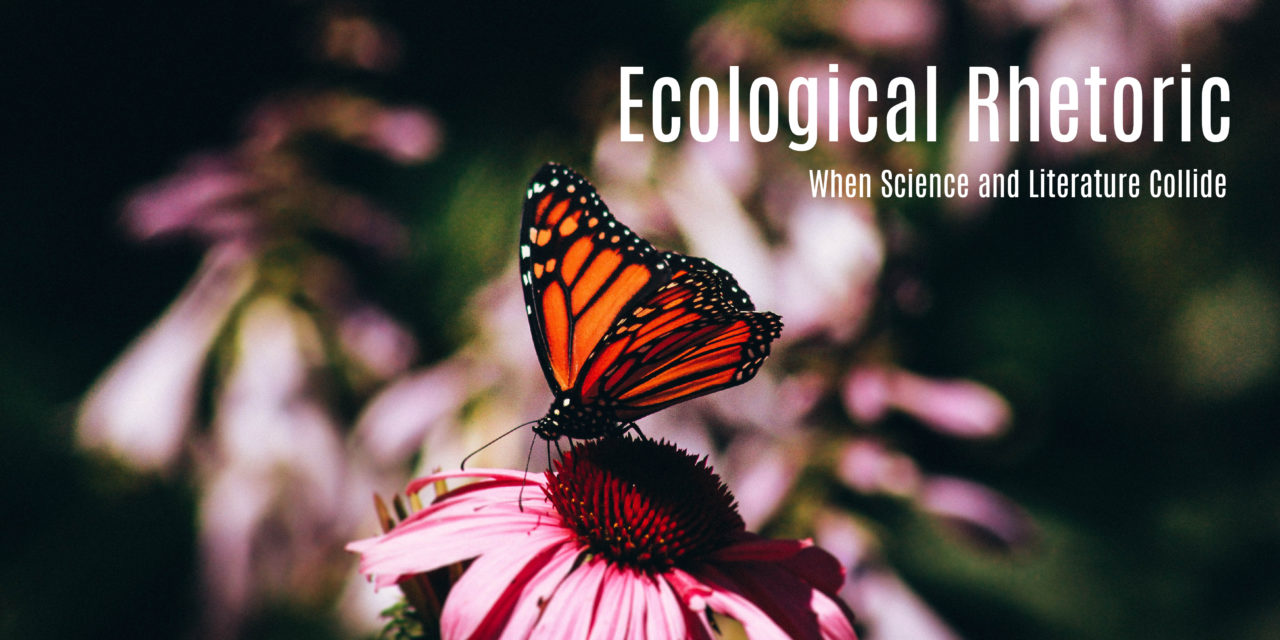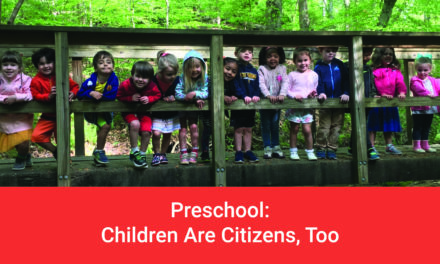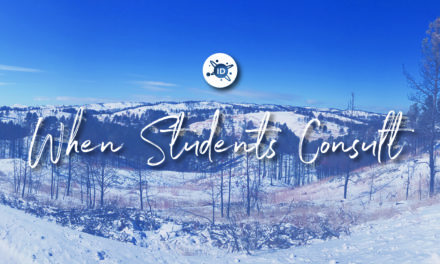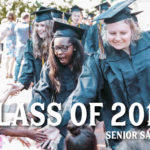
A COLLISION COURSE
When Dr. Brande Jones and Ms. Jenn Lloyd collaborated to create Ecological Rhetoric: When Science and Literature Collide, a year-long Project Based Learning (PBL) course was designed to impact our local community. Out of this, came four individual projects developed from curiosity, empathy, and passion.
Partnering with Lost Corner Preserve, a suburban reserve in Sandy Springs, provides a beyond-the-classroom environment rich with opportunity. Jones and Lloyd presented their class with a challenge to identify an environmental/ecological issue affecting the property and/or woodlands independently, work in groups to research potential solutions, and then determine how to best fix it. Weekly, the class travels off-site to expand their footprint for learning.
From identifying tree species to analyzing creek pollution, and relocating Monarch butterflies to the preserve students are taking the initiative to help Mother Nature in our local community.
Inspired by Field Notes on Science & Nature, edited by Michael Canfield, students are observing, journaling, sketching, and identifying a variety of elements as they collect their data.
Expanding on the art dimension, Upper School art teacher Hank Kunath joins the class on occasion to share the art of sketching along with watercolor techniques, keeping the scientific findings authentic to traditional documentation methods.
Junior Carson Watson shares, “Our weekly trips to the Lost Corner Preserve have provided us a new way to connect to the Sandy Springs community and provide assistance to local volunteers within the preserve where needed.”
At the end of the course, whether those who are seeking a science credit have learned to collect, measure, dissect, and analyze, or those working to earn a literature credit have focused on documenting observations, detailing the how/why, and summarizing their findings – they are all doing the same work, but approaching it from different angles.
In September, students from the Ecological Rhetoric class began working with Lost Corner Preserve in efforts to improve environmental issues in Sandy Springs. This partnership has provided MVPS students with rich, off-campus experiences. Initially, The students were challenged to identify environmental concerns, design potential solutions and implement change at the Preserve.
The students began by identifying environmental concerns and pitching possible projects to members of The Friends of Lost Corner – Alan Toney and Trisha Thompson Fox.
They then received feedback on their projects, including:
A monarch butterfly hatchery, as well as a certified sanctuary
Gardens that will ultimately increase biodiversity within the preserve
An educational app for the Preserve
A partnership with homeowner associations in the North Springs area to raise more awareness about water health and the effects on neighboring areas.
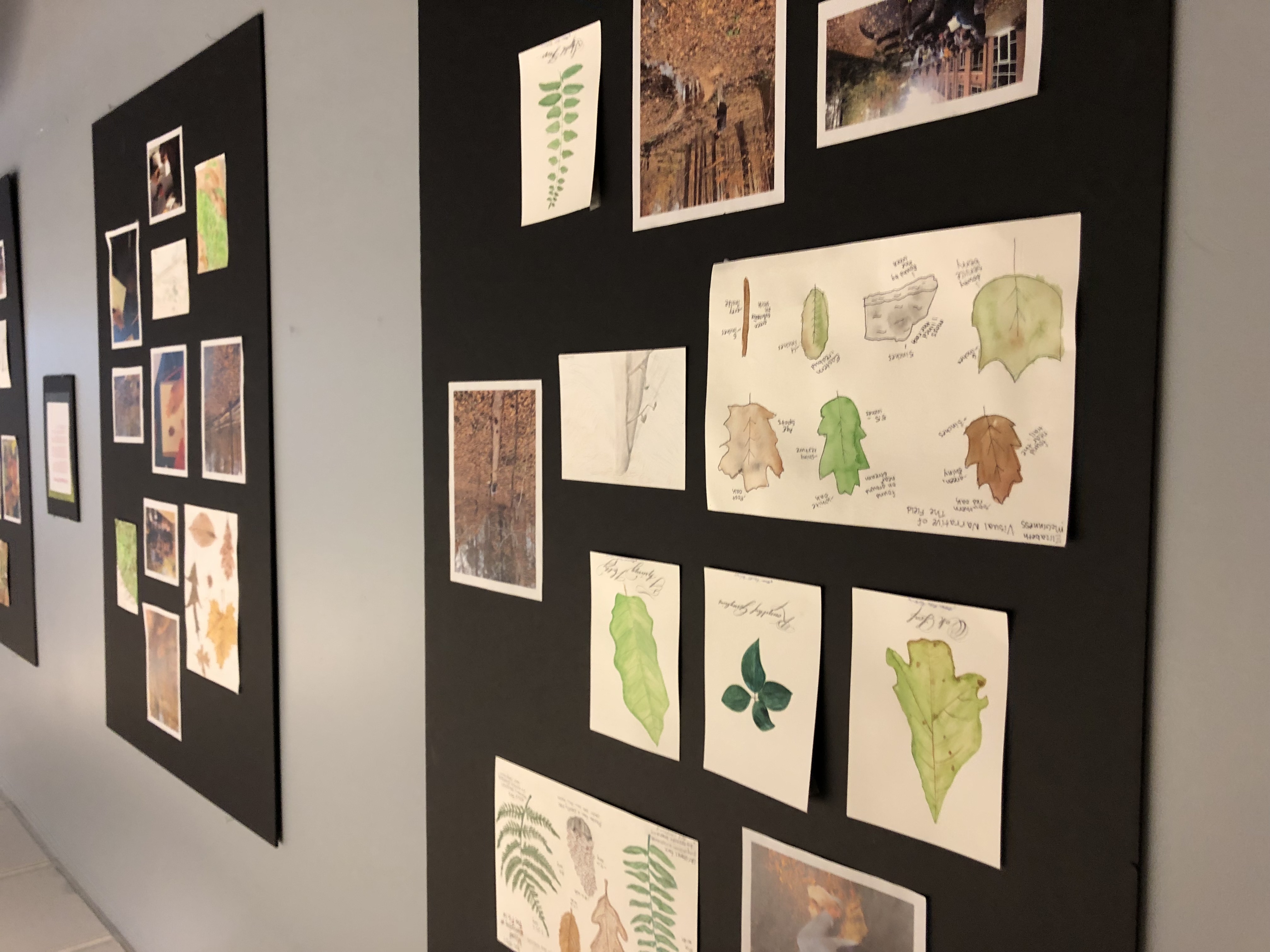
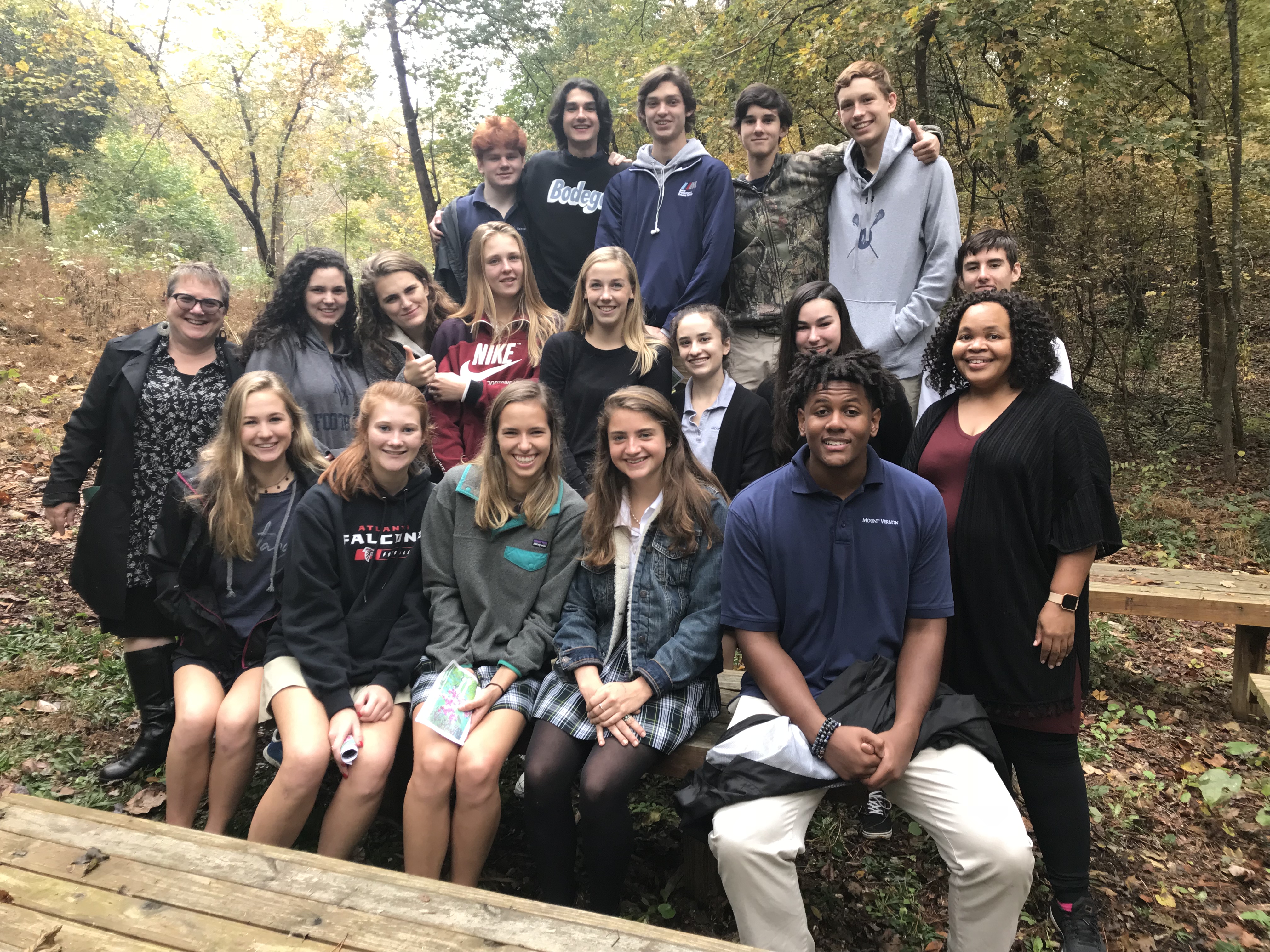

Project Reflections
Anna Kate Pickering, Shannon McCarthy, Grant Hollosi
Final Summary
In the course of the project, we have collected a lot of data and research into how to care for monarchs. We have discovered that the best way to raise monarchs would be in a tent or a net as opposed to a tank and gathered ideas on how to grow a pollinator garden (at Woodland Elementary, they grow their garden in cement block stacks or in slats laid into squares to form different plots). The garden has been planted and while we cannot yet introduce monarchs because the milkweed is not grown yet, Woodland is also willing to provide LCP with some extra plants should they need them and they gave us some seeds to plant for milkweed. In terms of the certification, I would prefer for that to be finished in conjunction with someone like Diana Woods who has a better understanding of all the plants present at LCP as well as their bloom periods. For the EEA certification, they also require some photos for verification, so someone would also need to take photos. The links to all the relevant documents are below.
Certification:
Documents:
Caroline Cuthbertson, Mary Catherine Springer
Butterfly Garden at Lost Corner Preserve Park
We started this project at the beginning of November with the main goal of wanting to build a garden that fulfilled the requirements of getting Lost Corner Preserve Park Monarch Butterfly Certified. We both collaborated with Trisha Thompson, Alan Toney, and Diane Wood to retrieve the plants we needed, learn more about gardening, and approve the steps we took to make the garden. We also collaborated with the other group in our class that was working towards getting Lost Corner Preserve Monarch Butterfly certified and having them approve of the pollinators plants we chose to plant in our garden. In late February we got the area approved and picked all of the Asian grass out of the area and lay cardboard down to prevent weeds from growing in the section we wanted to plant. We also told Trisha Thompson and Diane Wood we wanted Marigold, Asclepias incarnata “ Ice Ballet” Milkweed, Asclepias incarnata ssp. Incarnata swamp Milkweed, and Butterfly Bushes. In early April we met with Diane Wood to reconnect and she told us she was able to get all of the plants we wanted and the area for our garden kept up well.” So from that new the following week we picked the rest of the weeds, planted all of the plants, and put pine straw throughout the whole area. As we finished our garden people stopped by to thank us for planting the garden and was excited to see it grow throughout the next few weeks! If the next class wanted to continue our project they could continue the upkeep of the garden which would consist of watering the plants and keep working toward getting the park Monarch Butterfly Certified.
What was the goal
What was accomplished
What needs to be done next
Carter Thomspon
- Accomplishments
- The podcast explained our project very well and that we all learned a lot from writing/producing it. https://soundcloud.com/nolan-dalton/fish-out-of-water-podcast
- Education behind the science of water safety and testing.
- Set the groundwork and made the connections for future projects.
- What we didn’t get done
- Trying to locate the source of the E. coli bacteria was process that ended up being a bit too difficult given the amount of the time we had for this module. If a group carries on this project, they will have ample time to test the water in more locations than we could.
- Since we never identified the source of pollution in the stream, there was never any action taken to begin lobbying HOA and spreading awareness about the issue as we didn’t know who would be responsible for cleaning it. The rhetoric we produced for our soil lab had a strong message and personally I feel that if the pollution in the river is determined to have been brought about due to neglect, next years group will be able to craft rhetoric similar to ours to get the issue fixed.
- In addition to the fact that we weren’t able to start lobbying, we also didn’t create any kind of social media presence because we didn’t know where to set up our awareness network. I’m not sure if something of this degree is possible because it would seem like the group would need to advertise in public to gain any traction for the account.
- What needs to be done next year
- The soil at LCP should be tested once once the year starts, and twice more during winter and spring to ensure it has remained healthy.
- The source of pollution in the creek still needs to be directly identified, the stream will need to be mapped which will require more exploration/map research. Next years group may need to seek permission to access private property if necessary.
- If the source of this or a different issue is identified, they can contact the HOA to see the proper steps or who to contact to fix the issue. If it’s something that affects the whole community, social media pages can be established to garner attention and support.
- Additional testing should also be done during periods of heavy rain or snow in order to find out if the weather is contributing to the issue. I wish that we had more time to test in conjunction with changes in the weather because we had a strong suspicion that this was a large part of the problem.
- Concerns
- One of our largest concerns with the project was the feasibility of being able to produce a final product. An interesting conversation that we had to have early in the life of the project with Mr. Toney was one about our inability to take any action if the issue ended up being associated with Spalding Drive elementary school. This would have also been the likely outcome if the issue was due to a poorly managed septic tank as the person responsible probably would admit that it was their fault meaning they would never have to pay more for it. As nice as it would be to fix the issue and restore life back to this section of the creek, action to the magnitude that we wanted to take wouldn’t be very realistic.
- Final Thoughts
- For the amount of time and the nature of the project we were trying to complete, we believe that what we accomplished is acceptable. The method that we were trying to use to find the source of the pollution is similar to blindly throwing darts at a board. Without having more time to just keep going farther up the stream to test different sites, we never would have been able to identify the source. As amazing as it would have been to fix a real issue similar to this one in our community, the module schedule combined with the addition of the book in the final module just meant that we never had enough time to test as many sites as we needed to and therefore were never able to take the next steps of solving the issue of E. coli present in Fallen Branches creek.
Carson Watson
Lost Corner Preserve App Reflection
Our multi-purpose app is designed to educate park users of all ages. The information required to piece the app together is all laid out on a presentation titled “Lost Corner App Slides”. In order to obtain this information, we went to the preserve in the winter to spray paint the bases of trees in order to label them as the trees used for the app. We took pictures of each tree and were able to establish the species using iNaturalist. From here we started finding basic information about each tree using categories such as average height, leaf appearance, if it had flowers or fruit, etc. We were in frequent contact with both Mr. Toney and Ms. Thompson in order to make sure all the trees we identified were within the preserve. Once spring rolled around we went back to the preserve to take pictures of the trees in full bloom (which were able to be identified via the spray paint along the base). These pictures are being used for the bingo game.
Mr. Toney requested that we talk more about various aspects of the ecosystem within the preserve rather than just focus on trees. Jackie and I emailed Mr. Toney for a list of wildlife within the preserve, and from there we created a separate page within the app that includes information of animals within the preserve with details including size, appearance, what they eat etc. While this was going on Eric and Aiden worked on adjusting the rhetoric on each bingo card to accommodate the different age groups, and Katie and Maddy laid out the presentation to explain to the Girls Who Code Club exactly how we would want the app to be laid out. Below each deck, if there is specific information about how that slide appears it is specified in the speaker’s notes. Within the powerpoint, we categorize all the information under the main menu tabs that they will fall under such as Wildlife, About the Preserve, Games, and Contact information. Under the “Games” category we have sub-categories for each age group with the specific rhetoric and tree photos labeled.
The app itself has not been 100% completed yet, but all the information needed to complete it is available within the presentation.

